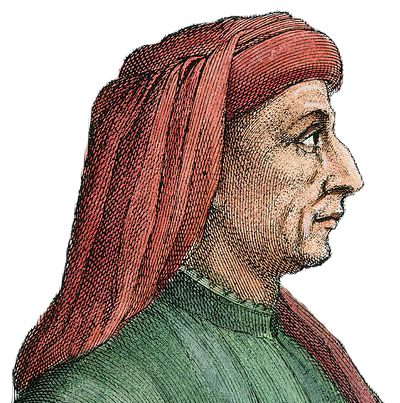Filippo Brunelleschi is one of the most famous architects from the Italian Renaissance but his route into this discipline was partly an accident, having been trained with the intention of joining his father as a notary
Even when selecting art as his preferred pursuit, it was sculpture that he initially was most prolific in, with several lesser known paintings also part of his early ouevre. His early technical training had been as a goldsmith which was a common method during this period of giving young artists a grounding in artistic techniques and craftmanship. He then had several experiences that combined to push his motivation towards specialising in architecture instead.
Filippo Brunelleschi travelled to the city of Rome where he would study the classical architecture of the Roman period, alongside his colleague Donatello. It was this pilgrimage to such an inspiring city that would persuade him to ultiamtely concentrate on architecture from there on in, though Donatello would remain fixated on sculpture.
There were also several committee-run competitions around the city of Florence that gave all notable artists in the region the chance to compete for major commissions. Once Brunelleschi had lost out for the opportunity to sculpt the bronze North Doors of the Florence Baptistery to rival Lorenzo Ghiberti, he had another reason to push on with his developments in building design instead.
These three artists would remain competitors for decades though also would exchange ideas and probably respected the work of each other. Brunelleschi would also later gain revenge for losing out on the North Doors by being victorious in another competition and by this point he had established himself prominently with local council and had become more than just an architect. The awarded commission was even more significant and challenging a project than the bronze doors, namely to produce a eye catching dome for the existing Florence Cathedral.
Despite having to deal with political amendments and huge technical problems that resulted from the short sightedness of the original building, the architect managed to pull off what is considered one of the true jewels in the crown of the Italian Renaissance - not just the Early Renaissance, and not just within the architecture discipline. That by itself is quite an achievement, when considering that the other highlights from this groundbreaking art movements included Mona Lisa by Leonardo da Vinci, The Sistine Chapel by Michelangelo, David by Michelangelo, The Birth of Venus by Sandro Botticelli, The Sistine Madonna by Raphael and Venus of Urbino by Titian.
Florentine Brunelleschi would also be entrusted with adding an ornate lantern plus an exedrae to the same cathedral in separate projects. His work on the basilicas of San Lorenzo and San Spirito were also particular highlights from his architectural output. It must not go unnoticed, however, that for many of these projects he was required to draw in his many other skills, something of which were learnt from his youth when being lined up to become a notary. His mathematics and science skills, combined with his own natural flair, enabled him to produce several items of machinery which were required in order to put some of his building designs into practice. He would later go on to design ships and solve several problems within Florence though his engineering innovations.
Linear perspective was one development by Brunelleschi that provided technical advancements within the Renaissance. Two panel paintings were placed in different areas of the Florence Baptistery with a small hole aimed at helping others, and himself for that matter, to understand perspective better and to start to ensure fresco painting could move on from the previously flat styles of earlier movements. This technique, to a degree, is still employed today, some 600 years later and although he was not the first to discover linear perspective, Brunelleschi did play a big part in refreshing ideas across Europe on this topic.




